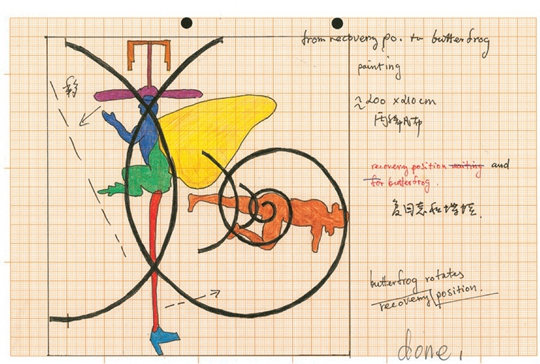CRASH EROTICS
| June 26, 2015 | Post In 2015年6月号

The erotics of destruction reaches its apotheosis, perhaps, in the sculpture of John Chamberlain, whose work is aptly theorized by J.G. Ballard’s Crash. It has been present in our culture, however, since the story of Narcissus, who fell in love with his own reflection and immediately turned into a plant. Wu Shanzhuan and Inga Svala Thórdsdóttir use this story as a point of departure for their thesis on civilization: that, once the beauty of self-obsession begins, a paradox of development and destruction emerges. Once civilization begins to obsess over itself, it develops to a point of inevitable demise. Generative obsession plagues the myth of Sisyphus, too: in the face of predetermined destruction, everything acquires a quality of meaninglessness. The idea of an unattainable, imagined ideal continues to drive him, a state that propels human existence and keeps it away from the brink of nihilism.
The inherent vulnerability of the demise of civilization, for Wu and Thórdsdóttir, is manifested in parthenogenesis, the ability to reproduce and regenerate without fertilization. A series of images reveal this: the Butterfrog, a combination of several forms that express both male and female genitalia, and references to Caravaggio’s Narcissus. In contrast to Chamberlain and Ballard, whose fascination with disaster may well be disastrous in itself, this humor detaches itself from disaster in the particular and instead reflects the rules of disaster.
Text by Song Yi
Translated by Xiaowei Wang

